Taos Remains a movie history icon
By Rick Romancito
When Mickey and Mallory married each other in Quentin Tarantino’s insanely violent “Natural Born Killers” (1994), where did they do it?

It was the same place one of the murderous Hunter-Killer flying machines caught up with the young Kyle Reese in “Terminal Salvation” (2009), and it was also featured in the movies “White Sands” (1992), “The Signal” (2014), “Wild Hogs” (2007), “Backtrack” (1990) and “Twins” (1988), among others.
Give up? Unless you’ve only seen it in the movies, we’re talking about the Rio Grande Gorge Bridge along US 64 west of Taos. The iconic symbol of a steel and concrete span over the precipitous wild river chasm may have only seemed dramatic or merely scenic to a director looking for a stunning shot typifying the American West, but to us who live here, it has a darker history — a place where far too many people have ended their lives, both by their own hand and as part of a crime.
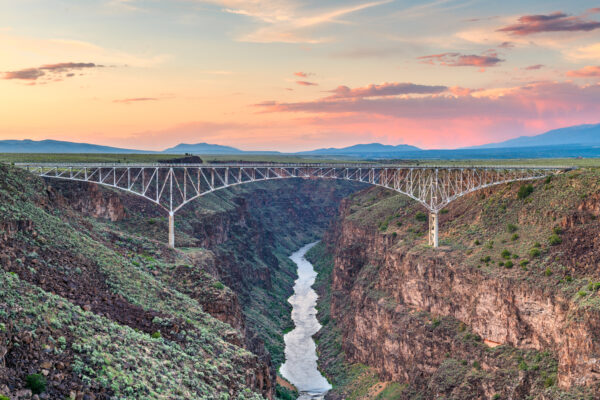
The movies, however, are rooted in fantasy, a cinematic dreamland where anything can — and often does — happen. In terms of how Taos fits into this, all it takes is a cursory overview of the movies that have helped to make this Northern New Mexican community so iconic.
Zozobra in the Ranchos Plaza
The first stop on this purely subjective and very roundabout detour of the Hollywood Sightseeing Tour has to do with one of Taos’ most famous (or infamous) celebrities: Dennis Hopper. In the late 1960s, the young filmmaker had an idea for a kind of hippie road trip movie and was scouting locations in Northern New Mexico when, according to an interview with the Taos News, he was given bad directions in Española and ended up on Taos Plaza.
Time has never stood still in Taos, but it has a way of slowing down a bit, a quality that struck Hopper when he saw Taos Pueblo men wrapped in blankets and wearing their long hair in braids waiting for a taxi ride back to their village a couple miles north. Juxtaposed with the tourists and curio shops on the plaza, he saw this might make a perfect spot to use as a location for his movie about two men who “went searching for America and couldn’t find it anywhere.” That movie was “Easy Rider,” a virtually made-on-the-fly indie movie that became a counter-culture phenomenon.
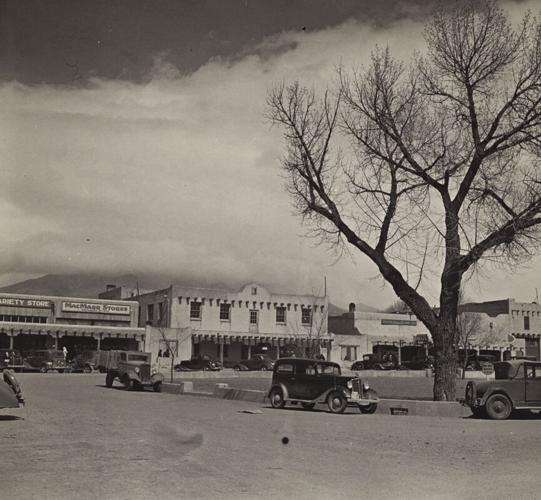
Fast forward to the late 1980s: Hopper by then had ditched drugs and drinking and was intent on reinventing himself when he hired Jodie Foster and his friend Robert Dean Stockwell to star in “Backtrack” (AKA “Catchfire”). The movie was about a hitman who is hired to kill a Los Angeles conceptual artist who witnessed a mob killing, but, as he tracks her down, he falls in love with her. This makes things a bit complicated when he kidnaps her.
The movie eluded success, but it was notable for using extensive Taos locations. One involved a strange scene involving the burning of Will Schuster’s Zozobra in the plaza at Ranchos de Taos in front of the famous San Francisco de Asis Church.
Zozobra is a huge marionette figure set afire at the beginning of the Fiestas de Santa Fe to drive out doom and gloom. Hopper and Stockwell lived in Taos, on and off, for many years. When Hopper died in 2010, he chose to be buried in a small cemetery in Ranchos.
With recent so-called revelations about UAP’s (Unidentified Aerial Phenomena), it’s interesting to note that Taos has — for decades — been a hotbed of sightings and even mysterious animal mutilations. So, it makes sense that Hollywood might nose around a bit, even as far back as 1975. That’s when a TV movie was released called “Search for the Gods.”
Obviously tapping into the pop culture interest surrounding a 1968 book by Erich von Däniken titled “Chariots of the Gods,” the movie followed the discovery of a mysterious medallion said to be connected to astronauts from another world who made contact with human beings in ancient times — namely early Native Americans. It starred Kurt Russell, Stephen McHattie, Ralph Bellamy and Victoria Racimo.
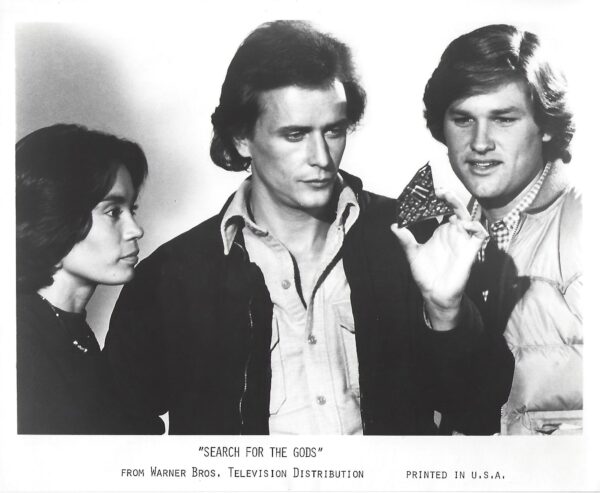
Although Taos is referred to by an alternate name, the movie uses extensive locations — such as the old Taos County Courthouse on Albright Street before it was replaced by a large modern administrative-judicial complex in 2011. In the movie, it was the site of a museum. And, of course, the Rio Grande Gorge was featured as a site where another alien artifact was found.
The movie was made as a pilot for a proposed TV series that never materialized. Maybe that was a good thing, because it likely would have encountered some questionable inferences to Native culture and history.
Play-to-movie Taos connection
“Off the Map” (2003) was an independent film directed by Campbell Scott about a straight-arrow tax collector who shows up at the home of the Grodens, an off-the-grid, out-of-the-way family, and winds up converted by their down-to-earth counter-culture ways.
The film was adapted by Joan Ackerman from her 1994 stage play that has been performed in Taos before the movie set up locations in and around the area. The crew even built a full-sized home set on a hillside above San Cristobal, north of Taos.
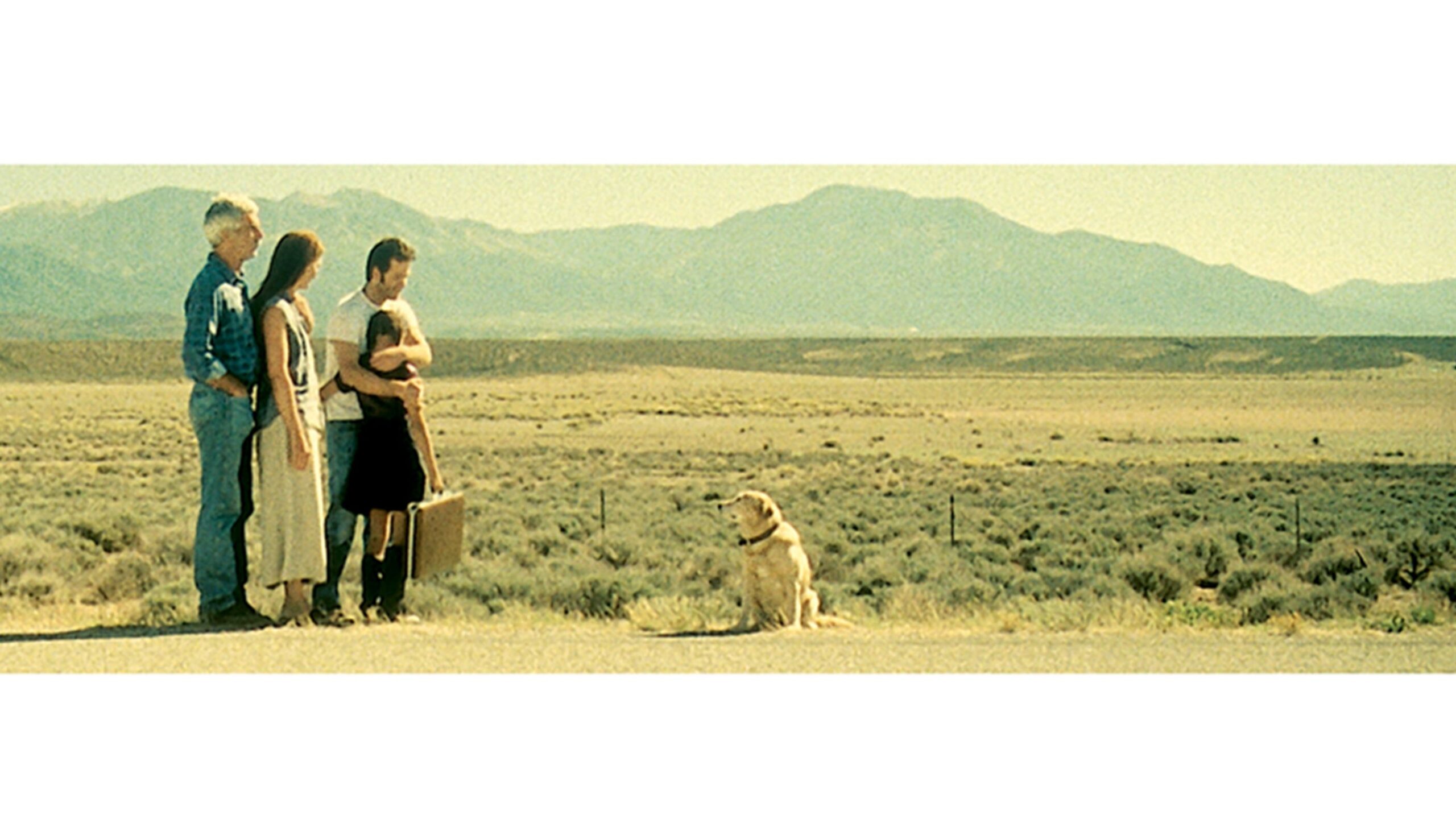
They also created a fictional K-Mart in the old Smith’s market at the corner of Paseo del Pueblo Sue and Siler Road where some locals wandered in curious about a new store in Taos (witnessed personally by this writer). It starred Joan Allen, Sam Elliott, Valentina de Angelis, Jim True-Frost, J.K. Simmons and Amy Brenneman. The movie, its crew and ultimately its embrace upon its release was celebrated by the Taos community.
“A 1942 black-and-white Western movie titled “Valley of the Sun” was based on a serialized piece of fiction from the Saturday Evening Post by Clarence Budington Kelland,” this writer noted in a La Historia column for the Taos News in 2022. “The film became notable for one of its stars — Lucille Ball — and for its story taking a different angle regarding the depiction of the conflict between Native Americans and white settlers.
“It was also notable for its cast, which featured many extras from the New Mexico Indian Pueblos of Taos, Santa Clara, Jemez, Ohkay Owingeh (known as San Juan at the time) and Tesuque. Landscape exteriors were largely filmed in the Taos and Santa Fe areas, plus some Arizona locations. Although the non-Native actors playing larger Native-esque roles were made to speak pidgin Indian; whenever a local extra had a chance to speak, they got to use their own tribal language. Thus, in one scene you’ll hear the Taos Pueblo greeting, ‘He-ya-ho.’”
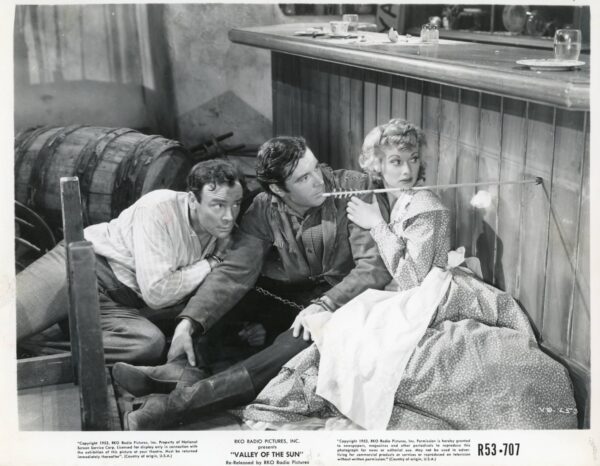
In social media, after the article was published, many Taos Pueblo citizens posted references and memories of relatives who appeared in that movie. However, times have changed and ideas that were once commonplace are now considered offensive. Audiences today might be shocked to hear the blatantly racist first lines in “Valley of the Sun.”
The scene features a group of American military soldiers escorting a group of Native men to a government official’s office in Old Tucson. As they pass a group of townsfolk, one man comments, “They oughta shoot those darn redskins while they got the chance.” His friend replies, “Yeah, sooner they get rid of them, the safer this country will be for us Americans.”
Beloved film festival
Taos and its legendary place in film history and beyond is cemented as solidly as Pueblo Peak is upon our northern horizon. So, it’s no surprise that it would become a place that would celebrate film and filmmakers with a festival that, in a brief time, grew to enormous renown.
In 1994, this writer, a Taos News arts editor at the time, had lunch with actor Joshua Bryant at Abe’s Cantina in Arroyo Seco to talk about an idea on which he’d been working. That idea turned out to be the Taos Talking Picture Festival, an event Bryant founded in April 1995 that exceeded all expectations. “After four years, it was named by writer Chris Gore as one of the top 10 film festivals in the world,” a media statement reads.

Over its run, it featured screenings of independent and world films, workshops and media literacy events that made headlines, and included appearances by celebrities including Elizabeth Taylor, James Coburn, Sam Elliott, Susan Sarandon, Julia Roberts, Chris Eyre and many more. It was also notable for its Maverick Award, and its Taos Land Grant Award, in which the winner was given ownership of a piece of land near Taos.
The event was so popular, the late-N.M. Gov. Bill Richardson often asked this writer, “when are they going to get that festival going again?” Unfortunately, after the tragic events of September 11, 2001, funding for the festival became more difficult to raise and, in 2003, the festival ended. Bryant and his wife, former actor Melissa Mullins, eventually moved to France.
Other films shot in and around Taos All the Pretty Horses (2000) American Dreamer (1984) Batman vs. Superman (2015) Bite the Bullet (1975) Butch Cassidy and the Sundance Kid (1979) Cortez (2015) Every Which Way But Loose (1978) Fools Rush In (1996) Make Haste to Live (1954) Old New Mexico (1940) One World (2001) Paul (2011) Powwow Highway (1989) Seraphim Falls (2006) Sidewinder 1 (1977) Surviving Columbus (1992) Sweet Hostage (1975) Taos, The Movie (2008) The American Dreamer (1971) The Man from Laramie (1955) Trailer: The Movie (1999) Twins (1988) Wild Hogs (2007)

